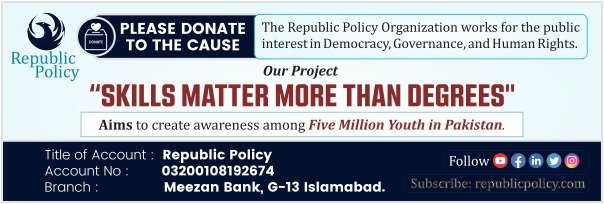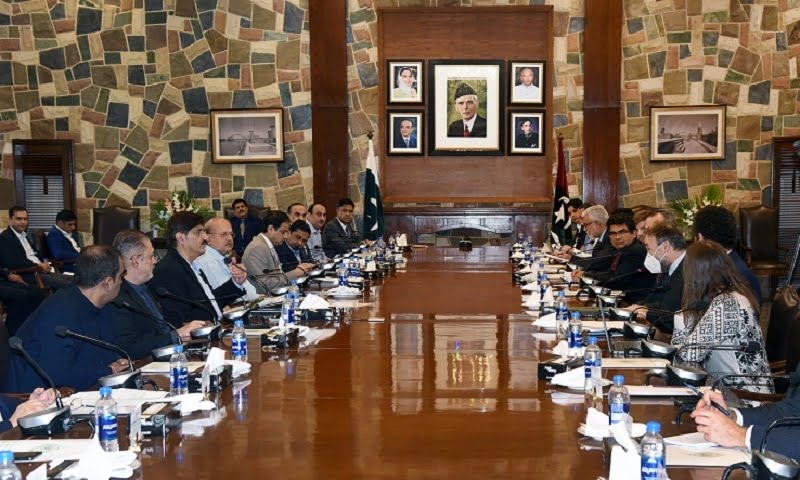Arshad Mahmood Awan
ISLAMABAD: When Finance Minister Muhammad Aurangzeb recently addressed the Pakistan Business Summit, his message was stark yet familiar — Pakistan is being undone by two existential crises: an exploding population and accelerating climate change. Both, he warned, are not abstract policy concerns but structural threats that are already eroding the nation’s human capital, economy, and social cohesion. His words carried the gravity of truth: no economic reform or fiscal adjustment can succeed unless these twin pressures are tackled head-on.
Pakistan’s demographic curve tells a sobering story. The country’s population, growing by more than two percent annually, is devouring resources faster than the state can replenish them. This unchecked growth is overwhelming schools, hospitals, and public infrastructure while trapping millions in cycles of poverty and malnutrition. The consequences are visible everywhere — from child stunting and anaemia to collapsing urban systems and a labor market unable to absorb its youth bulge. In parallel, climate change has unleashed floods, droughts, and erratic rainfall that are devastating agriculture, intensifying water scarcity, and displacing entire communities. Together, these forces are hollowing out Pakistan’s long-term productivity and pushing the country closer to social and economic exhaustion.
What makes the situation particularly alarming is how the fiscal architecture of the country has incentivized the very pressures now threatening it. The National Finance Commission (NFC) Award — the formula used to divide federal revenues among provinces — allocates a staggering 82 percent weight to population. This outdated mechanism effectively rewards headcount, not performance. It penalizes provinces that invest in education, healthcare, and population management while encouraging others to inflate census numbers for larger budget shares. The perverse outcome is a system that values quantity over quality, locking Pakistan into a cycle of overpopulation and underdevelopment.
The imbalance is glaring. Despite having auxiliary criteria such as poverty (10.3%), revenue generation (5%), and inverse population density (2.7%), population remains the single dominant factor in fiscal distribution. This imbalance has entrenched regional disparities, weakened national cohesion, and undermined any incentive for population control. Even worse, the same logic permeates political representation and bureaucratic recruitment, ensuring that numbers — not merit — dictate access to power and resources. This has also eroded the credibility of national censuses, fueling inter-provincial mistrust and political discord.
Meanwhile, climate change continues to amplify Pakistan’s structural fragility. Catastrophic floods in Sindh and Punjab, glacier melts in Gilgit-Baltistan, and prolonged droughts in Balochistan have combined to decimate agricultural productivity and food security. The World Bank estimates that Pakistan loses billions of dollars annually due to climate-related disasters, yet adaptation and resilience remain chronically underfunded. The link between climate and demography is undeniable: more people mean more demand for land, food, and energy — resources that are already shrinking due to environmental degradation. The spiral is vicious and self-reinforcing.
To escape this trap, Pakistan needs to rewrite its fiscal and policy frameworks with a vision anchored in sustainability and human development. A new NFC formula must prioritize outcomes such as literacy, healthcare access, climate resilience, and fiscal responsibility rather than mere population size. Provinces that invest in controlling fertility rates, improving education, reducing poverty, and protecting forests should be rewarded. Similarly, indicators reflecting ecological vulnerability — such as forest cover, drought exposure, and flood risk — should influence revenue distribution to incentivize climate adaptation.
The need for such reform is not ideological but existential. Pakistan’s poverty rate now exceeds 45 percent, with 25 million children out of school and a housing deficit in the millions. Each year, climate shocks destroy crops, industries, and livelihoods, erasing fragile gains. The youth — the country’s supposed “demographic dividend” — remain locked out of opportunity due to a crumbling education system and a widening skills gap. Without restructuring national priorities, Pakistan’s dream of inclusive growth will remain elusive.
Encouragingly, there is growing recognition across political and professional circles that the status quo is untenable. Economists, legislators, and civil society leaders increasingly advocate revising the NFC Award to reflect development performance and climate readiness. The federal and provincial governments must seize this moment to forge a new compact — one that rewards prudence, innovation, and resilience instead of perpetuating demographic pressure and environmental decay.
Pakistan stands at a crossroads. The choice is not between growth and sustainability; it is between survival and decline. Finance Minister Aurangzeb’s warning should not fade into the noise of everyday politics. It must become the rallying call for a generational reform that redefines what progress truly means — a Pakistan where every citizen counts, not merely where every head is counted.















